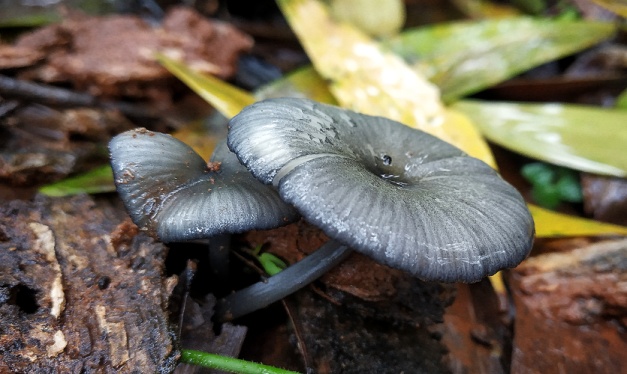Fruiting body small to medium. Pileus 1.5-3 cm in diameter, convex; orange to reddish orange, covered with small, floccose, thick, appressed squamules, concolorous with the pileus; margin involute to appendiculate, with velar remnants. Lamellae free, whitish to pale pinkish, becoming dark brown, crowded. Stipe 1.5-5 x 0.2-0.5 cm, equal, solid, fistulose, cylindric, concolorous with the pileus below the annulus, lightly coloured above, covered by the pulverulent veil. Annulus superior, above the centre, floccose, fugacious. Basidiospores 4.5-6 x 3.2-4.1 µm, ellipsoid, adaxially applanate, thick-walled. Spore prints dark brown.
Specimens examined
India, Maharashtra, Kolhapur, Ajara, Hattiwade, Ajara- Mahagaon road (16°07ʹ17ʺN-74°15ʹ28ʺE), among leaf litter of bamboo plantation, alone, 08.07.2020, Bornak, S. I. (Y20V11C1); Shahuwadi, Amba (16°56ʹ31ʺN-73°47ʹ40ʺE), on soil, single, 30.06.2023, Bornak, S. I. and Vedpathak, M. A. (Y23V4C2).
Remarks
Agaricus trisulphuratus, is recognizable by tiny basidiomes with reddish-orange pileus and stipe surfaces that have a well-developed, global veil that is concolorous on both the pileal and stipe surfaces and indistinct, floccose annulus at the apex of the stipe. Previously this species has been reported from Karnataka, Kerala, Punjab, Tamil Nadu, Uttar Pradesh and West Bengal. From Maharashtra it has been reported from Pune, Mulshi and Ratnagiri (Senthilarasu and Kumaresan, 2016). This is a new report from the study area.
References:
Senthilarasu, G. and Kumaresan, V. (2016). Diversity of Agaric mycota of Western Ghats of Karnataka, India. Current Research in Environmental & Applied Mycology 6(1):75–101, Doi 10.5943/cream/6/2/3






